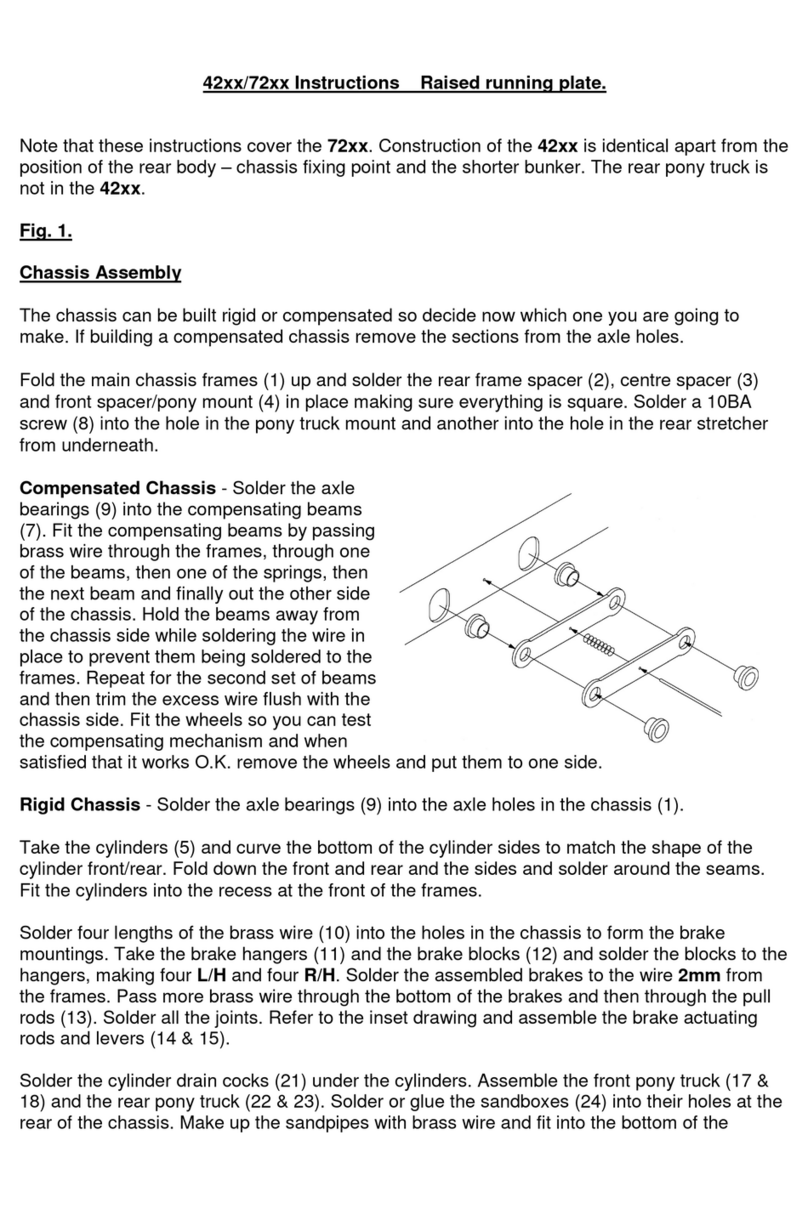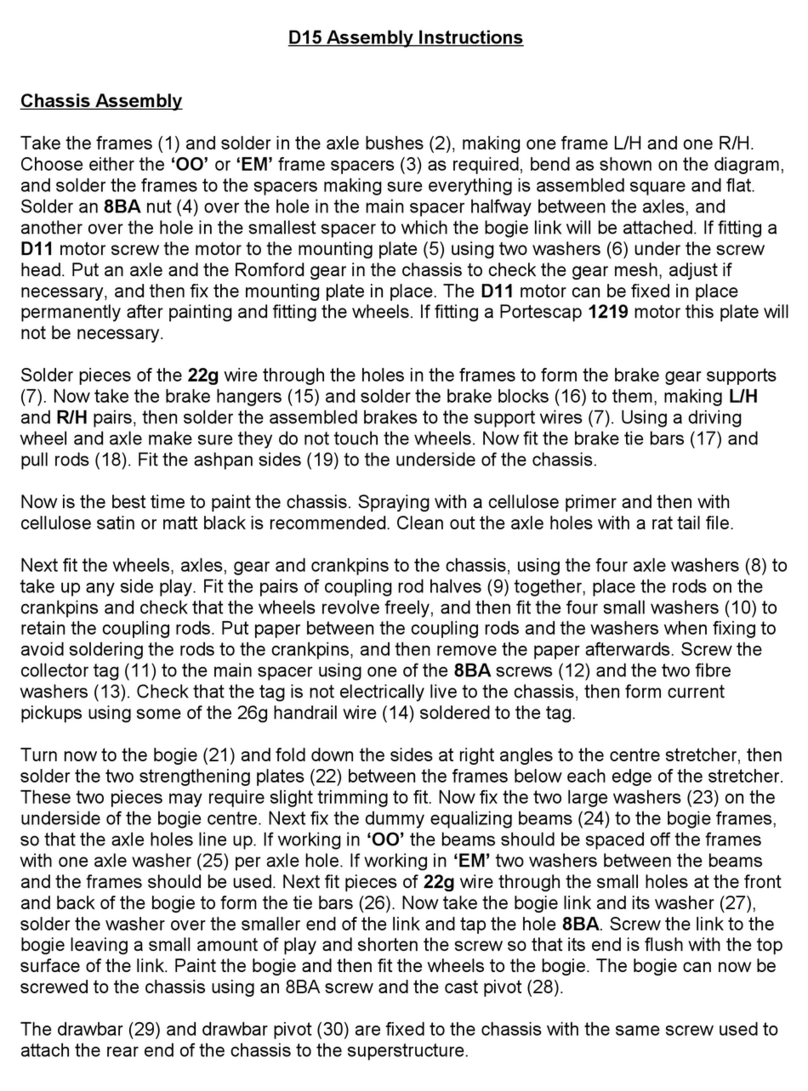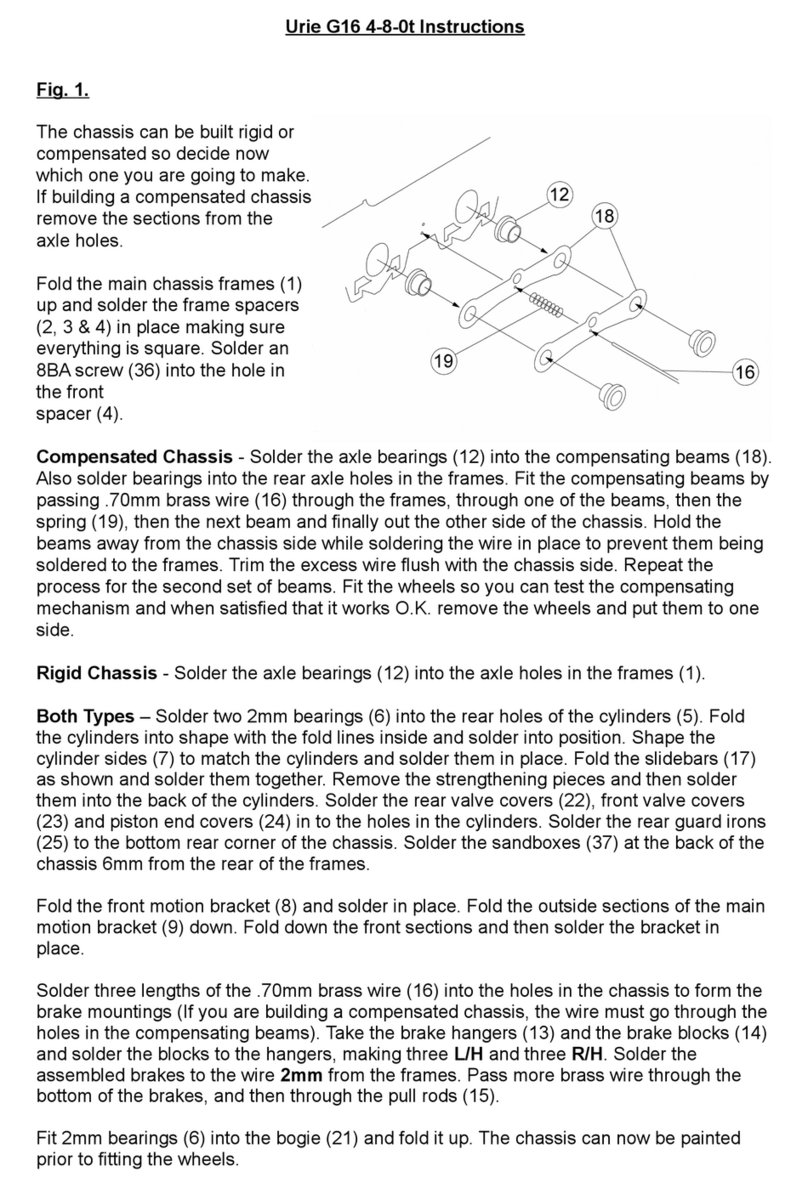mainframe. Both beams must move independently of each other. The assembly of the beams
is otherwise very simple. Make sure you fit the beams so that the large hole is over the rear
brake pilot hole. it the wheels (to the bogie and chassis) so you can test the compensating
mechanism. it the bogie spacer (13) and then the bogie and when satisfied that all works
O.K. remove the wheels and the bogie and put them to one side.
BRAKE ASSEMBLY
Solder two lengths of the brass wire (6) into the holes in the chassis to form the brake
mountings (take care not to get solder on the compensation mechanism). Take the brake
hangers (8) and the brake block overlays (9) and solder the overlays onto the hangers. Solder
the assembled brakes to the wire 2mm from the frames. Pass more brass wire through the
bottom of the brakes and then through the brake rods (7) and solder the joints.
BODY ASSEMBLY
Take the running plate (1) and fit the valances (2 & 3) into the recesses under the running
plate. it the buffer beam (4) into the recess at the front of the running plate and the rear drag
beam (5) into the recess at the rear. it the lower front frame sections (6 & 7) under the
running plate. old the splashers up. Leave the valance supports in position until the boiler has
been fitted.
Take the cab etching (8) and fold the cab sides at 90° to the cab front. Check the fit of this into
the slots and when satisfied with the fit solder it in place. Curve the splasher tops (15 & 16)
and solder them onto the splasher sides.
Take the frame tops (17 or 18). Solder them into the slots in the running plate. Solder three
8BA screws (27) into the holes in the running plate.
orm the cab floor support (11) and fit between the cab sides, with a 1mm gap between it and
the rear of the running plate. Solder the cab floor (12) on top of the support. orm the interior
cab splashers (13 & 14) and solder them to the cab floor.
Now turn to the boiler (19). Solder the seam together. orm the bottom of the smokebox to
match the profile of the smokebox front. Solder the smokebox front (20) to the boiler, the tabs
on the boiler fit into the recesses on the smokebox front. it the boiler bands (28) now [see ig.
2a.]. Now check the fit of the boiler into the slots in the cab front. Tack it in place and when
satisfied that all is level solder both boiler and firebox firmly in place. Curve the cylinder cover
(24), check the fit between the frames and solder in place.
Solder the cab side overlays (9 & 10) in place. orm the cab roof (21) and tack it in place. The
front of the roof overhangs the cab front and the sides, when all is square solder around the
seams. Solder the rain strips (28) in place. Solder the roof vent (23) and the riveted plate (22)
in place.
Now remove the valance supports.
old the top of the cab steps (29) and running plate steps (30) over. old the bottom step up
as well and run some solder into the fold for strength. Solder them in place under the running
plate and against the valance. Solder the small steps into the slots.






























